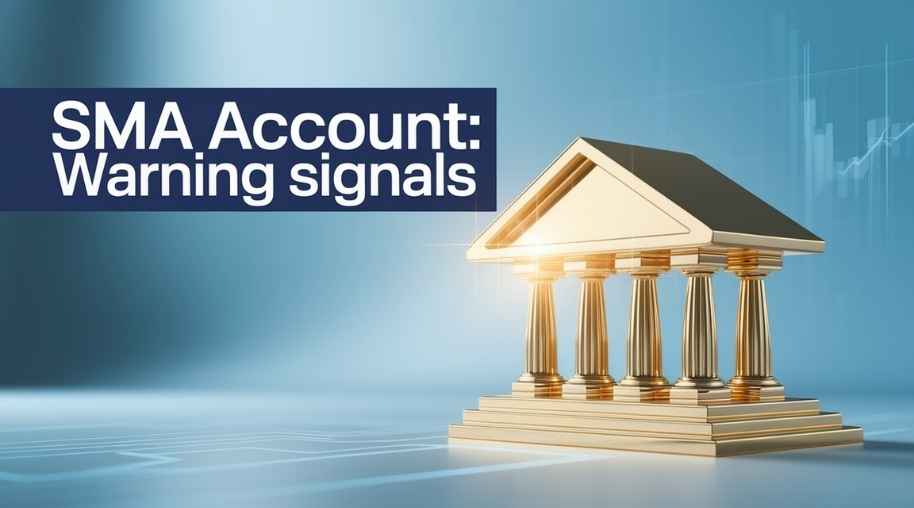SMA Full Form-Special Mention Account
by Shashi Gaherwar
0 2100
Special Mention Account (SMA): Understanding Early Warning Signals in Banking and Loan Monitoring

Introduction
In the financial sector, effective loan monitoring is crucial for a healthy banking system. A Special Mention Account (SMA) is a loan classification used to identify potential stress in a borrower’s repayment behavior before it becomes a Non-Performing Asset (NPA). This early warning system enables banks to take preventive measures to reduce credit risk.
The Reserve Bank of India (RBI) and global regulators have set guidelines for SMA classification to enhance financial stability and risk management. This article explores the concept, classification, RBI guidelines, and importance of SMAs in banking.
What is a Special Mention Account (SMA)?
A Special Mention Account (SMA) is a loan account showing early signs of financial stress but not yet classified as an NPA. The SMA framework helps banks recover payments proactively before the borrower’s situation worsens. It is part of the RBI’s Prudential Framework for Resolution of Stressed Assets.
Classification of Special Mention Accounts (SMA)
SMA classification is based on the number of days a payment is overdue:
- SMA-0: Not overdue for more than 30 days but shows signs of stress (e.g., restructuring requests, declining revenues).
- SMA-1: Overdue for 31–60 days, indicating potential financial stress.
- SMA-2: Overdue for 61–90 days; will become an NPA after 90 days if not rectified.
If overdue exceeds 90 days, the account becomes an NPA, requiring provisions that impact bank profitability.
RBI Guidelines on SMA Classification
The RBI provides strict guidelines for SMA management:
- Daily Monitoring: Banks must track accounts daily for early stress signals.
- Automated Reporting: Report SMAs for loans over ₹5 crore to the Central Repository of Information on Large Credits (CRILC).
- Resolution Plans: Implement Corrective Action Plans (CAPs) to resolve stress before NPA classification.
- No Discretion: Classification is strictly based on overdue days.
Importance of SMA Classification
- Early Warning System: Identifies stress to prevent loan defaults.
- Preventing NPAs: Reduces NPA burden through timely interventions like loan restructuring.
- Financial Stability: Enhances banking sector resilience.
- Informed Decisions: Enables data-driven lending based on SMA trends.
Actions Taken by Banks on SMA Accounts
- Enhanced Monitoring: Track borrower financials and market conditions.
- Customer Engagement: Offer repayment solutions to address challenges.
- Loan Restructuring: Modify terms like tenure or interest rates.
- Collateral Review: Reassess collateral to safeguard exposure.
Challenges in Managing SMA Accounts
- Delayed Detection: Early stress signals may be missed.
- Borrower Reluctance: Borrowers may hide financial difficulties.
- Economic Factors: Macroeconomic conditions like recessions impact SMA trends.
- Compliance Burden: Stringent guidelines require robust IT and skilled personnel.
Best Practices for Managing SMA Accounts
- Robust Risk Assessment: Use advanced credit rating models.
- AI-Driven Monitoring: Leverage AI and big data for distress detection.
- Customer Communication: Establish transparent channels.
- Credit Bureau Collaboration: Update borrower credit scores regularly.
- Regulatory Adherence: Comply with RBI and global regulations.
Future Trends in SMA Classification and Banking Risk Management
- AI-Powered Monitoring: Predict SMA accounts using machine learning.
- Blockchain Tracking: Ensure transparent loan repayment histories.
- Fintech Partnerships: Improve digital lending and risk assessment.
- Regulatory Innovations: Align SMA frameworks with global best practices.
A Special Mention Account (SMA) is a critical risk management tool, enabling early detection of loan defaults. By classifying stressed accounts before they become NPAs, banks ensure better asset quality and financial stability.
With advancing technology and regulatory frameworks, banks must adopt AI-driven analytics and proactive strategies to manage SMAs effectively, safeguarding the banking ecosystem. Understanding SMAs is essential for responsible lending practices and sustainable financial growth.
Further Learning Resources
If you’re passionate about building a successful blogging website, check out this helpful guide at Coding Tag – How to Start a Successful Blog. It offers practical steps and expert tips to kickstart your blogging journey!
For dedicated UPSC exam preparation, we highly recommend visiting www.iasmania.com. It offers well-structured resources, current affairs, and subject-wise notes tailored specifically for aspirants. Start your journey today!

Share:








Comments
Waiting for your comments